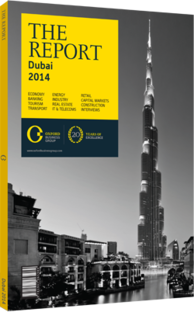In demand: Private school growth spurs greater choice for students
Enrolment in private schools has risen by 103% over the last decade, at an average annual growth rate of 6.2%, while adding 17,981 students between the 2011 and 2012 school years alone, according to the Knowledge and Human Development Authority (KHDA), a local government institution tasked with regulating Dubai’s private education system. Looking ahead, an expanding population and higher enrolment in kindergarten over the last several years suggests that the current growth trend will continue into the future.
Local Landscape
Responsible for the education of 88% of all students in Dubai, private schools are the primary means of education in the emirate and receive strong support from the government. Speaking at the 2012 Education Investment Middle East and North Africa Conference, Dino Varkey, chief operating officer of GEMS Education, said, “We are witnessing a shift in the attitudes and mindsets of those that matter. Today, there is a collective willingness to cast aside the traditional, intellectual debates about the role of private sector in education, in favour of an approach that seeks to bring together powerful partnerships in any and all contexts, so that we may address the most significant challenge of this century – quality education for all.”
While every private school in Dubai is part of the same system, with families free to choose which school they send their children to from 15 different curricula, growth in enrolment has not been uniform across all types.
UK and Indian curricula schools educate the highest number of students, accounting for 31.5% and 30%, respectively, while US schools are also popular, making up 21.2% of all enrolment.
By Number
Just as total enrolment varies between different curricula, so too has the growth pattern among different schools over the last several years. As per KHDA statistics, International Baccalaureate schools enjoyed the largest (78%) jump in enrolment numbers between 2008 and 2012. The leading curricula – UK, US and Indian schools – all increased by between 25% and 33%. Enrolment in French and Filipino schools grew by 34% and 58%, respectively, though they started with fewer students so their overall gains were smaller.
In trying to estimate future growth, one of the most important indicators is in the enrolment of students in the younger years and its comparison to the number of pupils in the higher grades. Official statistics show that there was a year-on-year increase in enrolment in kindergarten programmes of 14.7% from the 2011 to 2012 school years. The number of younger students currently exceeds those in secondary school to the extent that even if kindergarten enrolments were to remain at their present levels, and there is no indication that this will be the case, the system would still expand over the next decade.
Expansion
By the end of the 2012 academic year, the overall capacity utilisation of the private education system stood at 89.5%, leaving little room for expansion in current schools. Furthermore, capacity utilisation for kindergarten and primary schools, where most new enrolments have come from, stood at 93.4%.
Public officials have been keen to highlight the achievements of UK-curriculum schools over others. Abdulla Al Karam, director and chairman of the KHDA, said that, “We have seen more UK schools open up in the past five to six years than any other curriculum. The British education is the one that is lifting the education system up, not because of the numbers, but because of the quality of education it brings, which is extremely important to us.” All signs indicate that to maintain the growth and improvement of the private education system, UK schools, as well as the other major curricula, must also continue to expand, both in the number of schools and in enrolled students. The KHDA has said that it expects UK schools to add another 50,000 spots by 2020, on top of the 70,000 already filled.
While the question of which curricula types will expand the most will depend on the parents and students themselves, it is clear that new schools will be needed in the coming decade to meet the demand for high-quality education for the growing population.
You have reached the limit of premium articles you can view for free.
Choose from the options below to purchase print or digital editions of our Reports. You can also purchase a website subscription giving you unlimited access to all of our Reports online for 12 months.
If you have already purchased this Report or have a website subscription, please login to continue.

